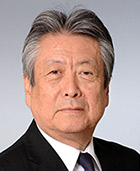
The Oto-Rhino-Laryngological Society of Japan will be celebrating its 125th anniversary next year. When Eigoro Kanasugi, who helped establish this society, returned to Japan in 1892, after having studied in Germany for five years, the ears, nose, and larynx were treated as separate specialty areas in Europe. Kanasugi was the first to combine these three areas into a single area of study, which he named “otorhinolaryngology.” The next year, in 1893, he established the “Tokyo Oto-Rhino-Laryngological Society” and began publishing the Oto-Rhino-Laryngology Journal, marking the beginning of this society’s history.
Today, the society has over 11,000 members and 16 related societies, organizes a system for the training of high-quality specialists, holds a large number of academic lectures, scientific meetings and publishes both English and Japanese journals, in addition to conducting cutting-edge research and supporting the development of advanced medical technologies. The society also passionately engages with social aspects of medicine, including social care (infants and the elderly), industrial/environmental protections, and medical insurance.
As a science involving both sensory and musculoskeletal organs, otorhinolaryngology is an academic and medicinal field that deals with organs that are vital to functions such as hearing, speaking and language, which play crucial roles in human society. Moreover, in an aging society, problems such as hearing impairment, loss of sense of smell or taste, loss of balance, and difficulty swallowing are directly linked to senility and QOL.
Otorhinolaryngology also includes surgery of the head and neck and covers a wide variety of specialist fields and treatments, making it an attractive area of medicine. There are also numerous related areas, such as ophthalmology, pediatrics, neurology, brain surgery, plastic surgery, and dentistry/dental surgery, and target patients range from children, adolescents and young adults to the elderly. Otorhinolaryngology is a broad-ranging discipline with aspects of both surgical and internal medicine and may be involved in the full range of care from diagnosis through to preservational and surgical treatment.
A newly established organization for training specialist doctors will provide educational guidelines, and societies for all fundamental fields will begin a new program in 2018. For the first time in 2017, as a result of the society’s development of an attractive specialist research program focusing on areas such as clinical results centered around key hospitals, including university hospitals, around 200 specialist doctors were able to embark on new research in a high-quality educational environment. However, the introduction of a credit system related to innovations in the organization’s specialist training has been a source of inconvenience for the teaching faculty during lectures and short specialist courses, etc. Urgent improvements to the program, lecture hall set-up, etc., are now under consideration to minimize this disruption.
In 2016, a “Conference for Promoting Reform” was held to reconsider both management of the Society and the future of otorhinolaryngology from a broad, cross-sectional perspective. A variety of WGs were set up and began working vigorously on strategies for reform. One WG focused on the Society from a general perspective and began devising ways to make otorhinolaryngological treatments more comprehensive on the basis of regional requirements and in accordance with regional health care plans in areas such as emergency care, home treatment, and school health care. The WG steadily worked towards improving the Society’s function and the development of a structure for the Society that encompasses the whole country. The WG focusing on academic training reconsidered the design of academic lectures and specialist short courses, while reflecting on effective collaborations between the Society and related academic societies. The WG considered the improvement of teaching quality, population decline, and falling membership, advising that the Society should aim to move from the era of fragmentation between specialist sub-fields to a new era of integration and consolidation between academic societies. Firstly, in relation to the concurrent opening of societies, the Society should keep pace with other related societies while continuing to look for a solution. To improve convenience in areas such as the management of member data and to update the credit acquisition system, a WG was also set up to focus on the uniform management of member information; this group is currently developing ways to utilize member information effectively and accurately.
As the organization that first integrated the study of ears, nose and throat into the field of otorhinolaryngology, the Oto-Rhino-Laryngological Society of Japan should return to the principle of examining the patient as a whole and, beginning with closely related disciplines, build bridges with other areas of medicine with the objective of mutually increasing value and expertise. Through training and improving the quality of experts in the field of sensory organs and musculoskeletal science so that these experts are capable of providing high-quality medical treatment and through the various solutions that otorhinolaryngology hopes to provide, the society aims to contribute to the study of otorhinolaryngology (from both a scientific and treatment perspective) as well as to the well-being of patients and regional communities. This is the vision of both otorhinolaryngology and head and neck surgery.
Hiroshi Moriyama, MD, PhD
Chairman, Board of Directors
The Oto-Rhino-Laryngological Society of Japan, Inc.
(August 11th, 2017)

